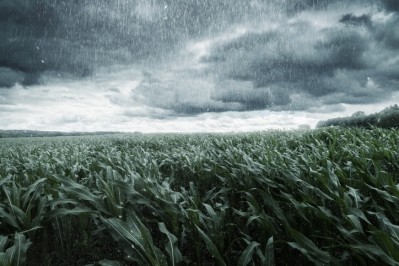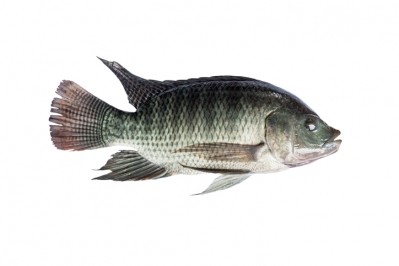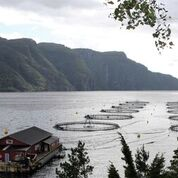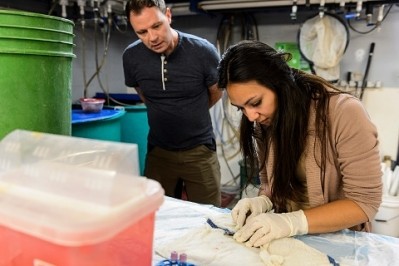Intelligence below the surface: Fish-like sensor seeks to cut feed waste, support precision aquaculture
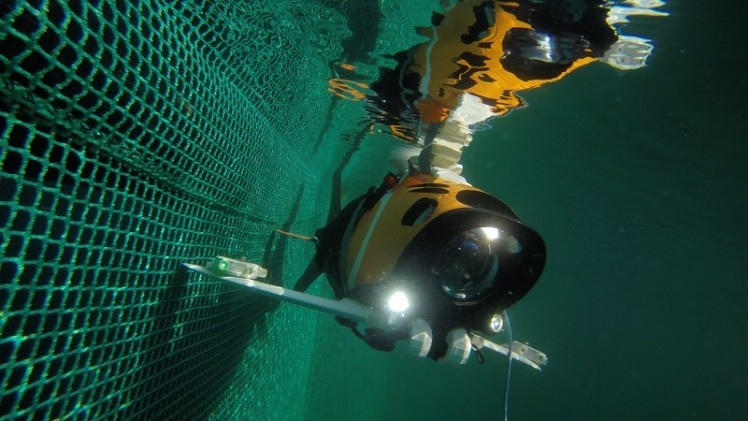
The technology developed by the California-based company, which officially formed in 2014, involves biomimetic fishlike drones, linked up to a web dashboard to deliver data in real-time for predictive analytics.
The company spent several years developing its robotic fish or bio-inspired vehicles (BIV), named Nammu, said Liane Thompson, CEO and co-founder of Aquaai.
She told FeedNavigator: “Our goal is to be able to have a positive impact on the waterways. Technology has to be simple enough to use or what’s the point of having it.
“Intelligence below the surface – you’re able to empower the farmers with the ability to make smarter decisions and for us, it means there is less waste. It’s a step towards protecting the ocean.”
Aquaai has since started work with the Norwegian salmon producers, Kvarøy, to test its model in situ.
Swimming sensors and fish response
There has been an interest in expanding the use of cameras and technology in precision aquaculture, she said. However, it can be a challenge to get in proximity to the fish, which its sensing units address.
“We’re able to get up close,” she said.
The BIV can gauge water temperature changes or whether oxygen levels are decreasing.
The big advantage of Aquaai’s technology, she said, is that it is all-in-one system, which can replace the multiples of existing aquaculture monitoring equipment.
The initial test that Aquaai ran with Kvarøy was aimed at determining how fish reacted to the sensor units, said Thompson.
Fish tend to avoid sensors or technology added to aquaculture tanks, she said.
However, the monitoring system did not prompt negative reactions from the fish, she said.
“They swam with her [the test unit] and accepted her in a few hours,” said Thompson. “That was the main concern with any farmer – how does the stock react to any new situation or technology?”
After establishing that the BIV would work with an aquaculture species, the next development stage focused on deciding what sensors each unit should have, she said. “The question became how can we help you make the decisions for your farm? [That are] better for your stock? Better for your environment?”
Feed waste tracking, data gathering
The standard units track data and provide video footage, said Thompson. However, they also can be customized depending on producers’ needs.
“It’s all plug and play sensors – we’re not inventing sensors so we can scale and modify the payload,” she said. “The basic model has salinity, temperature, pH, depth and visuals.”
The data collected is gathered by Aquaai and then sent on to a web-based dashboard that the producer can access, she said. As more data is collected, the goal will be to offer analytics and predictive information for the producers.
That element of the system could track changes in feeding behavior, fish status or water conditions and potentially help with disease prevention or control, she said. “If we’re able to send alerts or do analytics to see this is what was going on when x disease spread, maybe we could mitigate or rectify some of these points so it doesn’t happen again,” she added.
The system is also intended to help producers reduce feed costs by monitoring eating habits and changes in feed consumption, said Thompson.
“Especially where it comes to feed, we’ll have the ability to save farmers money on overfeeding,” she said. “They’ll see when the fish are eating, how they’re eating, [or] if they should scale back on feeding for some reason. The goal is the waste [reduction] – they’ll be able to diminish feed waste and save the farmer money.”
“Kovary has said we’ll be able to help reduce waste in feed and give them the tools to make decisions that are more tailored to the stock,” she added.
The device also can be programmed to complete specific circuits through a production area, on a random path with the fish in the facility or be driven specifically through an app, she said. “If you want to do a net inspection – the robot is programmed to do different tasks, so it will swim along the net,” she added.
“There are different paths that can [programmed] it can go to the bottom and see how much feed is there – if there is more, then the fish aren’t eating, or if there is less,” said Thompson. “That is one of the tasks.”
Depending on how they will be used, the devices are intended to be in a production system for about a year, she said. Current tests have been run for six months, but also use a tethered system capable of providing constant, real-time video.
However, the system particulars would change to fit the needs of the company, she said. Not all systems would be tethered.
Market development
Currently, Aquaai is working toward a series of demonstrations for aquaculture producers in August to expand its client base, said Thompson. The current systems can be leased on a three-year contract.
Several units are available in 2018 and they can be pre-ordered for production in 2019, she said. “We’re having the demonstrations and farmers can commit to a lease and that’s what our focus is right now,” she added.
The company also is preparing to open a second office in Europe to support customers later in 2018, she said. “We really want to work closely with the fish farmers, so we don’t want to have them all over the world and not deliver the customer satisfaction.”
Additionally, there is interest in expanding into South America, she said. But, that step is forecast for mid-2019.
Looking longer term, there could be several other applications for the device including monitoring for illegal fishing activity and potentially for use checking damage in flood zones or collecting ocean temperature data, said Thompson.
“We’ve been approached by different companies who are interested in the fish [unit] and investment houses,” she said. “We’re always balancing what you can do and what you can afford.”
